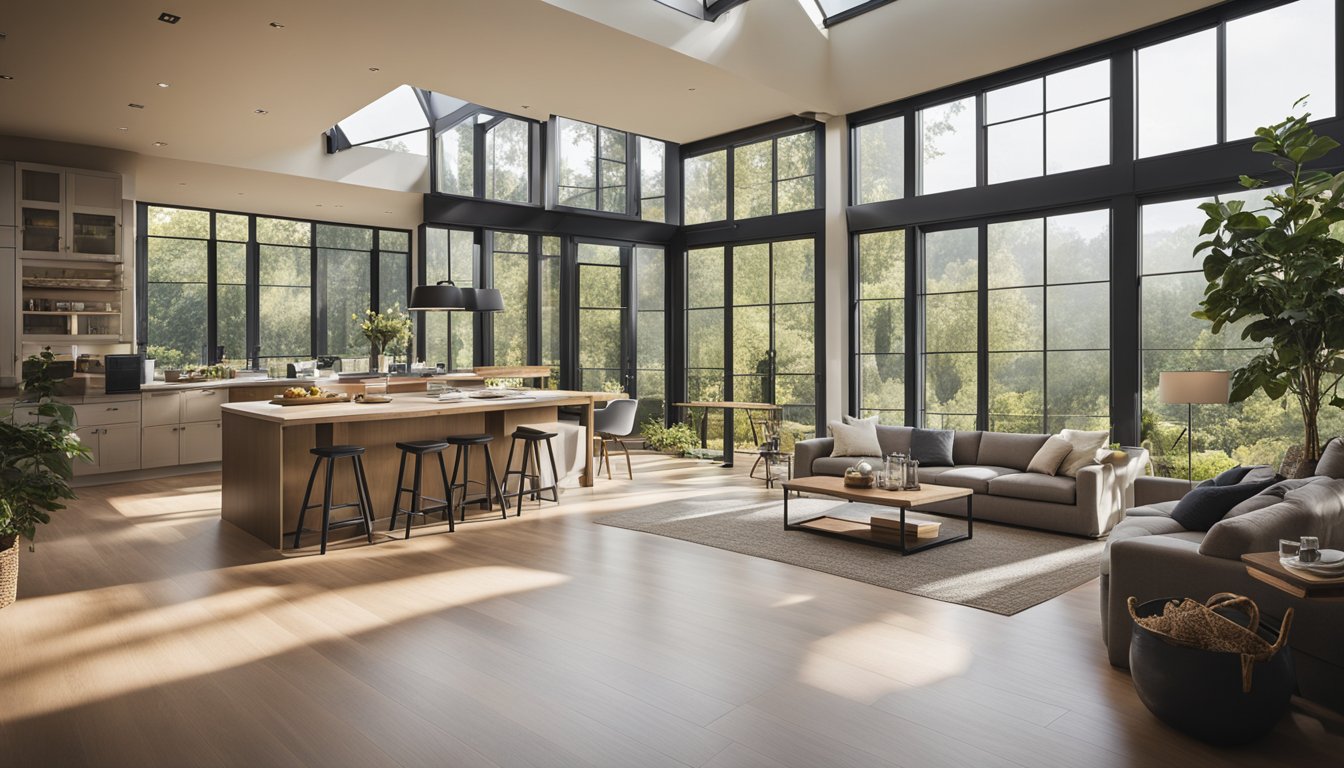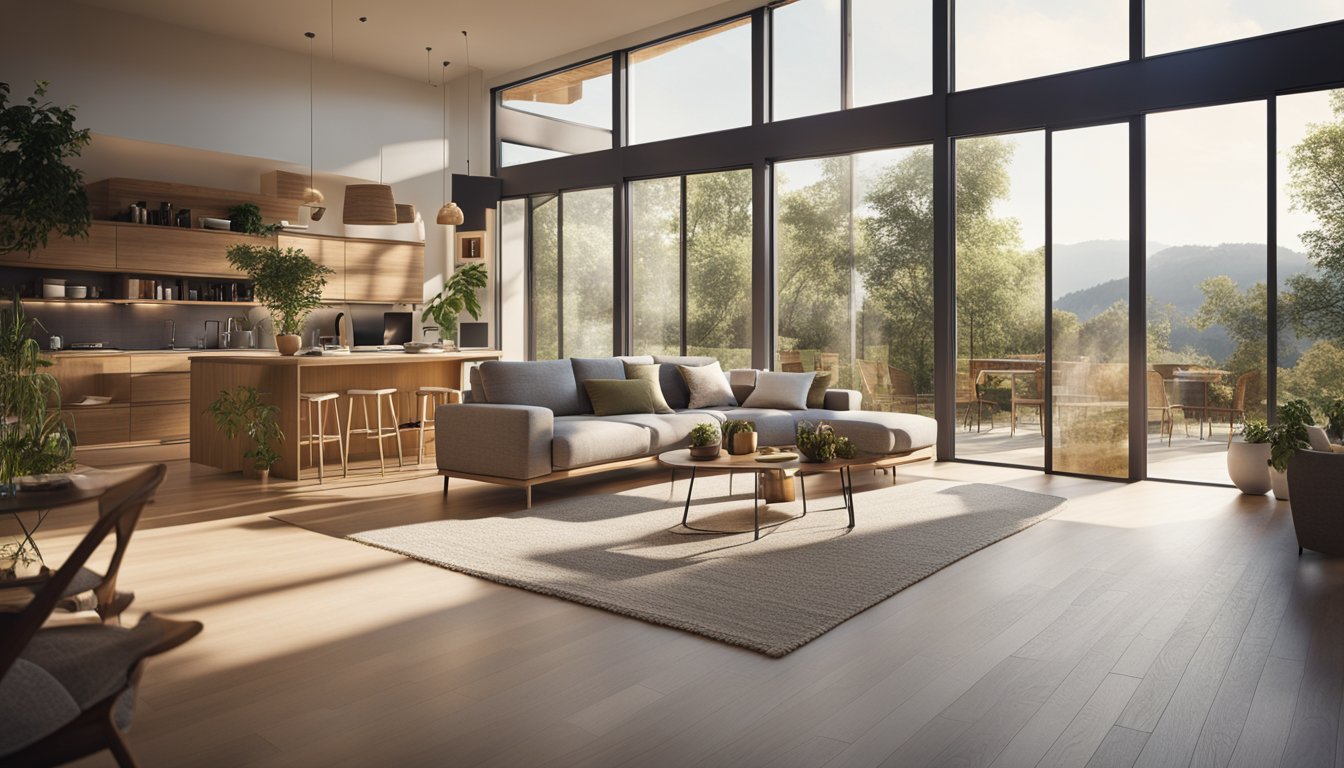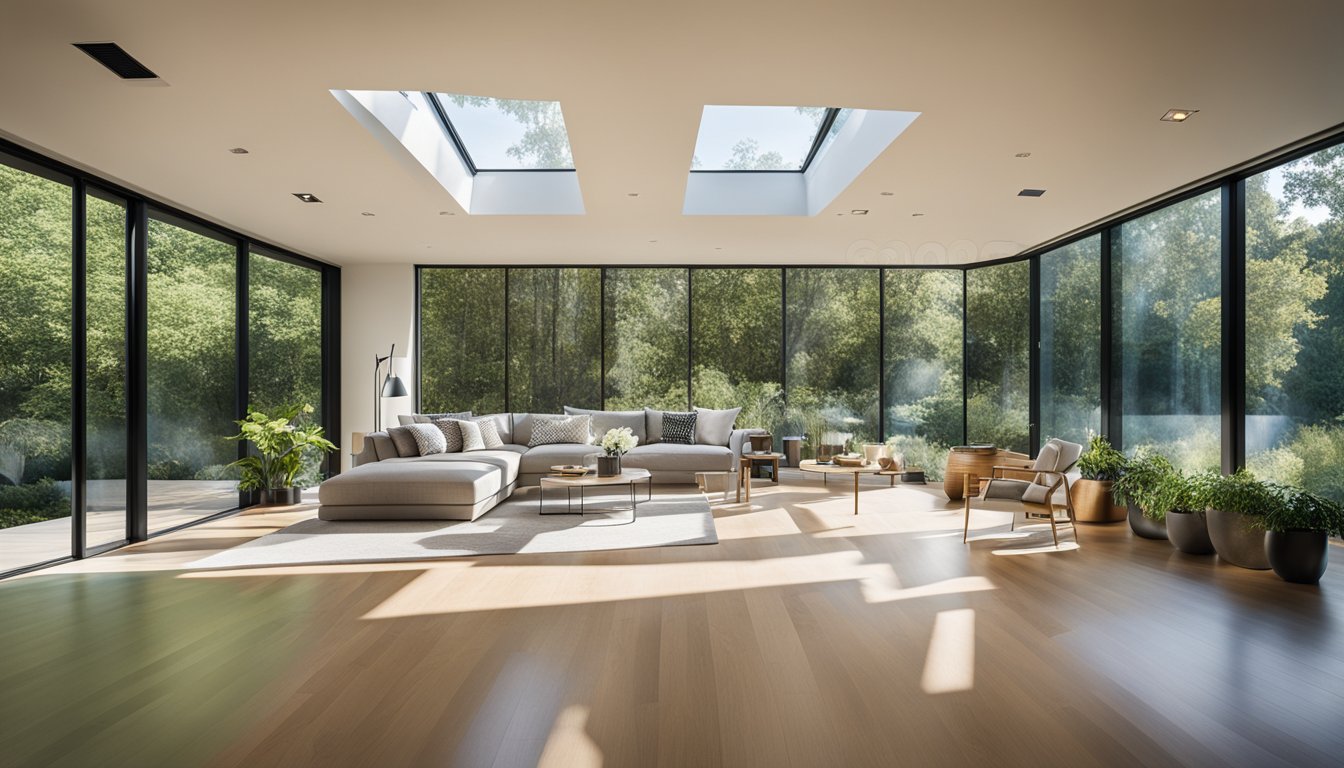Late updated: 18 Feb 2025 12:02
Written by: Daniel Harper
Maximising Natural Light in Sustainable Home Design: Optimising Spaces for Eco-Friendly Living
In the world of sustainable home design, natural light stands as both a timeless and transformative element. Its ability to enhance visual appeal while providing comfort and contributing to our health and well-being makes it indispensable. Maximising natural light not only beautifies our living spaces but also reduces energy consumption, creating a warm and efficient environment.

To fully leverage the potential of natural light, strategic design choices must be made. Thoughtful window placement and the use of reflective surfaces can dramatically alter how light travels through a room. These decisions can amplify its impact, elevating the ambience while keeping energy use minimal.
As we explore these design principles, it's important to consider the multifaceted benefits of integrating natural light into our homes. It's not just about beauty; it's about crafting spaces that work harmoniously with the environment to enhance our daily lives.
Key Takeaways
- Maximising natural light boosts home ambience and cuts energy use.
- Strategic design choices enhance light flow and room feel.
- Natural light integration promotes comfort and well-being.
Strategies to Maximise Natural Light
Enhancing natural light is essential for sustainable home design. By strategically positioning windows, selecting the right features, and using reflective surfaces, we can optimise sunlight within our living spaces.
Window Placement and Orientation
The placement and orientation of windows are pivotal in capturing maximum daylight. South-facing windows provide abundant light and warmth, benefitting from direct sunlight throughout the day. For even distribution, we should consider incorporating clerestory and floor-to-ceiling windows. These allow daylight to flood into different layers of our homes. It’s crucial to avoid obstructions like trees or buildings that might block the light source. By prioritising these techniques, natural light is maximised, enhancing both energy efficiency and the aesthetic appeal of our interiors.
Selecting Transparent Features
Integrating transparent elements, such as glass doors and expansive windows, allows for uninterrupted light flow. When designing these elements, size, and placement greatly impact the effectiveness of light penetration. Utilising multi-pane glass or strategically positioned glass partitions can enhance transparency while providing privacy. These features not only encourage a seamless transition between indoors and outdoors but also contribute to the overall increase in natural light, creating a brighter, more inviting environment.
Integrating Reflective and Light-Coloured Surfaces
Utilising reflective surfaces can effectively amplify natural light within our spaces. Strategically placed mirrors opposite windows can disperse daylight throughout a room, increasing brightness. Similarly, light-coloured walls and light-coloured flooring reflect daylight, making spaces feel larger and airier. It’s beneficial to use glossy finishes on surfaces, including furniture, to bounce light around the room. By incorporating these strategies, we achieve a harmonious balance of style and functionality, maximising daylight in our home design.
Incorporating Skylights and Solar Tubes
Skylights and solar tubes are excellent solutions for introducing light into areas where traditional windows are impractical. Skylights can provide overhead illumination throughout the day, especially in central areas of the home. Solar tubes offer an innovative way to channel light through reflective tubing into dark rooms or hallways. These features enhance the natural light levels in interiors, reduce the reliance on artificial lighting, and contribute to a more sustainable, energy-efficient living environment.
Designing for Health, Comfort, and Efficiency

The synergetic relationship between natural light and sustainable home design fosters an environment promoting health, enhancing comfort, and boosting energy efficiency. Through strategic design approaches, we can create spaces that are not only sustainable but also contribute positively to the well-being of their inhabitants.
Prioritising Spatial Layout
A well-thought-out spatial layout is central to maximising natural light in a sustainable home. By adopting an open floor plan, we allow light to travel freely, minimising the need for artificial lighting. Furniture placement plays a pivotal role, ensuring windows and light sources are unobstructed. Open spaces enhance both comfort and visual appeal, reducing shadows and dark areas. In addition, incorporating strategically placed mirrors can help reflect light deeper into a room, amplifying sunlight exposure and its accompanying benefits, such as natural ventilation.
Leveraging Natural Elements for Well-being
Incorporating natural elements in design significantly enriches our living experience. Indoor plants not only elevate interior design aesthetics but also improve air quality, offering mental health benefits. As they interact with natural light, they contribute to an environment that enhances our overall well-being and comfort. Adequate sunlight exposure is essential for maintaining optimal levels of vitamin D, which is vital for bone health and immune function. In line with the Environmental Protection Agency's recommendations, maximising exposure to natural light can alleviate stress and promote a natural circadian rhythm, thus improving our quality of sleep.
Optimising Home for Energy Savings
Energy efficiency is a fundamental component of sustainable home design. By harnessing natural light, we reduce our reliance on artificial lighting, which directly cuts down on electricity usage. This not only results in cost savings but also lowers the home's carbon footprint. Architectural elements like large windows, skylights, and light shelves are effective in enhancing thermal performance and energy savings. These design choices ensure that homes remain warm in the winter and cool during the summer, maintaining comfort all year round. In this way, we achieve a balance between sustainable interior design and energy-efficient living, contributing positively to environmental conservation efforts.
Frequently Asked Questions

Maximising natural light in sustainable home design can enhance the living experience while reducing energy use. Effective strategies, building orientation, and window designs play a pivotal role in this process. Additionally, reflective surfaces and shading devices can balance the natural illumination and thermal comfort of a dwelling.
What strategies can be employed to enhance natural lighting in residential spaces?
We can increase natural light by incorporating large windows and glass doors. Skylights are another effective option, especially for darker areas. Utilising open floor plans without unnecessary partitions also allows light to flow freely throughout a home.
How can the orientation of a building affect its natural light intake?
Building orientation is crucial in capturing optimal sunlight. Positioning living spaces with southern exposure in the northern hemisphere maximises daylight. Conversely, in the southern hemisphere, northern exposure is preferable. This strategic orientation leverages the sun’s path to illuminate interiors effectively.
What are effective window designs for maximising light penetration in homes?
Appropriate window designs include floor-to-ceiling windows and bay windows. Such designs expand light entry points while also providing expansive views. Double-glazed windows can be used, managing heat transfer while permitting ample natural light.
Can the incorporation of reflective surfaces improve a home's natural illumination?
Reflective surfaces like mirrors and light-coloured walls amplify natural light by diffusing it across rooms. Using glossy finishes on floors and ceilings can similarly help brighten spaces. These elements act collectively to enhance overall brightness without additional energy costs.
How does natural light contribute to the energy efficiency of a dwelling?
Natural light reduces the need for artificial lighting, lowering electricity consumption. Sunlight also has a warming effect, decreasing reliance on heating systems during cooler months. Thus, strategic use of natural light helps in achieving energy-efficient homes.
What role do shading devices play in controlling and optimising natural light in buildings?
Shading devices such as awnings, blinds, and overhangs regulate light levels and prevent overheating. During peak sun hours, they can reduce glare and excessive heat, maintaining indoor comfort. Their use is essential for balancing light and thermal dynamics.
